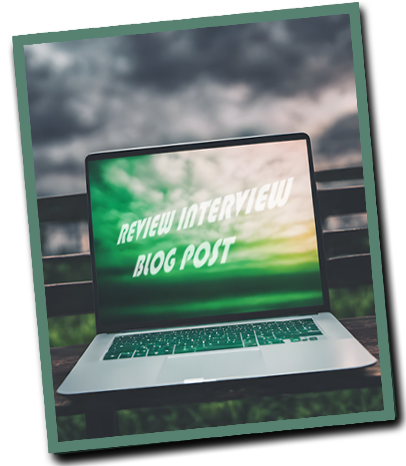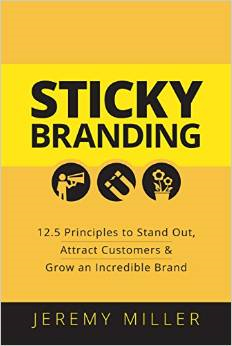
Product reviews and interviews come together in this short blog post. What’s important is to give an analytical opinion so that your review is different from everybody else’s.
In interviews, it’s important to allow interviewees’ personalities to come across, not just their words. Both reviews and interviews can be as long or as short as desired.

After you see this portfolio sample below, click here to get back to the Portfolio Index page.
“Review-Interview Blog Posts” are a unique amalgamation of subjective analysis and firsthand accounts. By pairing a thorough product review with an in-depth interview of its creator, these posts offer readers a comprehensive understanding of the product from both an external and internal perspective.
Such dual viewpoints can provide a holistic appreciation of the product’s value, features, and the intentions behind its design.
For brands, this format serves as an authentic platform for storytelling. While the review portion allows for constructive feedback and highlights the product’s stand-out features, the interview dives deep into the brand’s ethos, journey, and vision.
This narrative humanizes the brand and establishes trust with the audience. Furthermore, potential customers get a chance to understand the motivations and values behind the product, enhancing their connection and loyalty to the brand.
The primary challenge in creating Review-Interview Blog Posts is ensuring unbiased and objective reviews while also eliciting valuable insights during the interview. It’s essential to strike a balance between critical analysis and appreciation, giving readers an honest assessment without overshadowing the creator’s intentions.
Additionally, curating insightful questions for the interview, understanding the product’s nuances, and ensuring a cohesive narrative flow between the review and interview segments requires meticulous planning and adept writing skills.
When executed correctly, Review-Interview Blog Posts are more than just content; they bridge the gap between consumers’ perceptions and creators’ visions.
They not only inform but also inspire, enlightening readers about the intricacies of a product and the passion that drives its creation. This format, in its essence, offers a journey – from understanding a product’s utility to resonating with its underlying philosophy.
Read on …

Jeremy Miller is a Brand Builder, Keynote Speaker, and the President of Sticky Branding – a Brand Building Agency. After rebranding his family’s business, Jeremy now works with client companies to make them stand out, challenge the giants of their industry, and grow incredible brands. His latest book “Sticky Branding” contains a wealth of his insights into brand-building.

I cannot believe I’ve spent 35 years learning “sticky brand-building “ from three multinational agencies and then working on some of the biggest multinational brands, while someone like Jeremy Miller has got it all so right in far shorter a span of time – by the sheer hands-on experience of taking a me-too, run-of-the-mill family business and turning it around through direct experiential insights he got as he went along.
This book “Sticky Branding” from Jeremy Miller is 100% a book “written from the trenches”. It is a book specifically written for small and mid-sized companies that find the bookshelves bare when it comes to brand-building advice that is suited to their scale.
From the very first page of the introduction to the very last page, the book comes across as an authentic first-person account and a 360-degree view of what real practical value-based brand-building is about. It sequentially addresses the principles and tasks involved and encourages aspirants to follow along step by step, trying out the exercises at the end of each chapter.
We don’t get that overwhelmed feeling that is usual after reading a typical tome on brand strategy … instead, this book gives a very comforting feeling of do-ability.
The entire book is a study of how to be “brand-conscious” in everything you do as a company. Don’t just state the value proposition, but reflect it in all your work.
The emphasis is on building a brand from the inside out. The first imperative is to see that every employee of the company becomes a custodian of the brand.
The idea reinforced repeatedly through the book is about what a “sticky brand” really is. It’s not about being the brand you want to be, but to be the brand your customers want to be with.
The top 3% customer conversion rule is very well explained. The book beautifully shows that it’s the bottom 90% of the customer-pyramid for whom the brand has to be built.
There is also an excellent exposition of the three V’s in brand building. The triad of volume, velocity and value are thoroughly covered.
I understand the desires and pain points of both very small and very big businesses and their brands. More importantly, I understand online consumer psychology.
In real life, small to midsize companies seldom have the bandwidth to do it all themselves and they need advertising agencies that understand their specific needs. I felt the book could have addressed in more depth the question of how smaller companies can get their agencies to work with them on their brand-building at their wavelength.
There is also the question of who at the company has to be the “owner” of the brand assets and what specific training and orientation this person needs to have to fill the role well. I would have liked to see this topic addressed.
I noticed that the book deals with very current ideas like “brand storytelling”, “content sharing as communication” and “community building” as particularly important to small and midsize companies. With the rampant growth of the social media these very same ideas are now preoccupying the minds of very large organizations as well.
1. In these days of borderless markets, should small-to-mid-sized businesses still focus on local markets within their control or should they try to reach out to global audiences via the online media? What do you see as the challenges of keeping small-to-mid-sized brands sticky when the marketing reach transcends geographies and becomes more affected by the cultural differences in perception of the brands in different geographies?
Geography is not a limitation for small-and mid-sized companies anymore. Any business can market, sell, and deliver its services anywhere in the world. The question is does servicing international markets fit your business model and capabilities. Sticky Brands cannot be all things to all people. They have to choose where to play and how to win — how they will Tilt The Odds in their brand’s favor.
For example, in my business I serve international markets. The Sticky Branding Community is a global community, and I work with companies from around the world. Geography is not a limiter. It’s an option.
2. What is your feeling about small-to-mid-size companies and their use of the social media in creating their “sticky brands? Large companies are now resorting to sounding smaller on the social media through a more personal “brand tone of voice”. How should small companies aim to sound over the social media, to become or stay sticky in that milieu, when larger brands are downscaling themselves to become part of the competition?
Social media is ubiquitous. Everyone has access to Facebook, Twitter, Instagram, and other platforms. What separates one firm from the next on these platforms is two elements: the quality and caliber of their content; and presence on the social media channels.
Every business has access to the tools. It’s how they use them that separates the average companies from the Sticky Brands.
3. In your book, why is the last chapter called Point 12.5? Why only half a point for that chapter, when the entire book’s wealth of information is distilled into that last chapter?
Principle 12.5 is an important one: Choose your brand. Brands are built by people — smart, ambitious, impatient people. People who are passionate about growing their brands, and will do anything in their power to make it a success.
The final chapter combines this principle with the conclusion. I thought it a fitting way to wrap up the book. What do you think?
Delve deeper into the tangible results of my unique approach by exploring my service spectrum, my case studies, and other items in my portfolio. Each piece is a testament to the harmony of experience, an unconventional mindset, and cross-sector adeptness.
If you’re eager to elevate your brand’s narrative and strategy, don’t hesitate to tap into this wealth of knowledge.

"As a Content/Brand Specialist, and SEO/UX Writer, I can help transform your brand's online presence. I can lift it with innovative ideas to take it to an enviable position. Let's collaborate to create a captivating brand story, engage your audience, boost your online visibility, and increase your ROI. Take the next step towards your brand content success and contact me today."
Shobha Ponnappa
I Bring You:
Content Marketing That’s “Unusual By Strategy” … Tips, Tricks, Tactics, Techniques, Trends, Training.
Get my weekly ContenTracker Newsletter packed with loads of content marketing ideas – proven and unusual.
Get a free download of my ebook on “50 Unusual Ways To Use AI In Content Marketing” … and transform your success.

Just fill in the form to join my community … we have big and small brands for company. You’ll stay on the speedway to growth.
KEY TOPIC CATEGORIES COVERED ON THIS SITE:
COPYRIGHT © 2024. SHOBHAPONNAPPA.COM. ALL RIGHTS RESERVED.